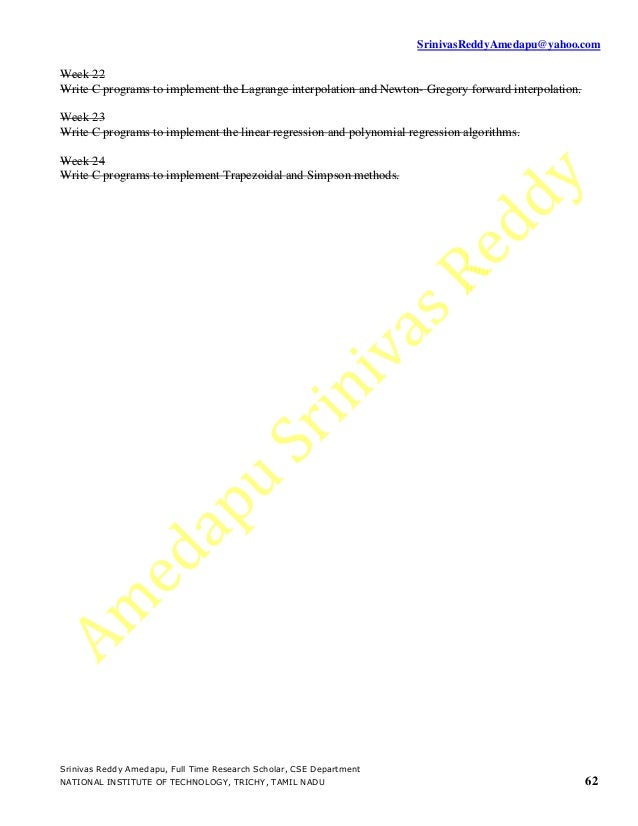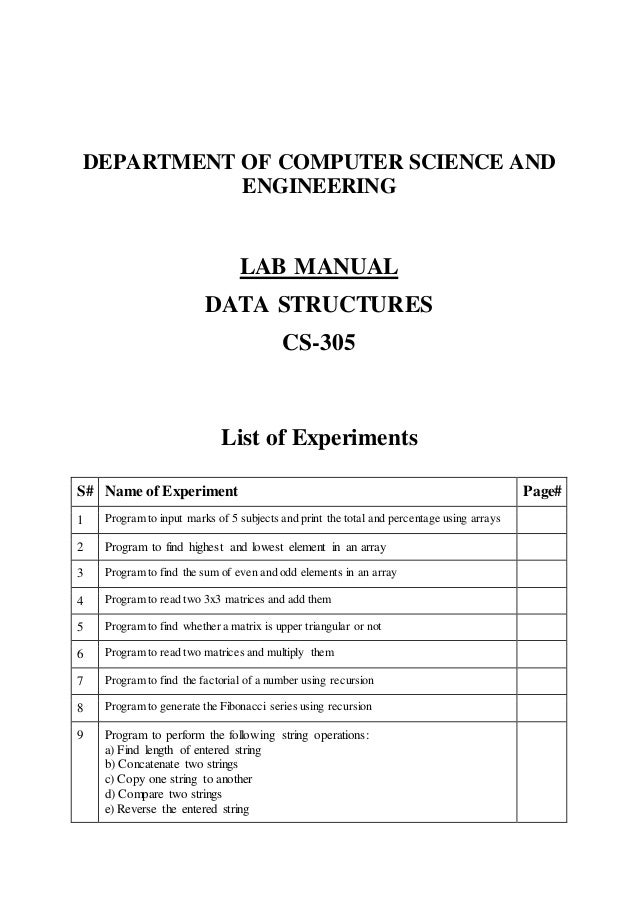- Advanced Data Structures Lab Programs
- Data Structure Lab Programs Sem 3
- Data Structures Through C++ Lab Programs

Advanced Data Structures Lab Programs
Array is a container which can hold a fix number of items and these items should be of the same type. Most of the data structures make use of arrays to implement their algorithms. Following are the important terms to understand the concept of Array.Element − Each item stored in an array is called an element.Index − Each location of an element in an array has a numerical index, which is used to identify the element.Array RepresentationArrays can be declared in various ways in different languages.
Data Structure Lab Programs Sem 3
For illustration, let's take C array declaration.Arrays can be declared in various ways in different languages. For illustration, let's take C array declaration.As per the above illustration, following are the important points to be considered.Index starts with 0.Array length is 10 which means it can store 10 elements.Each element can be accessed via its index.

For example, we can fetch an element at index 6 as 9.Basic OperationsFollowing are the basic operations supported by an array.Traverse − print all the array elements one by one.Insertion − Adds an element at the given index.Deletion − Deletes an element at the given index.Search − Searches an element using the given index or by the value.Update − Updates an element at the given index.In C, when an array is initialized with size, then it assigns defaults values to its elements in following order. Data TypeDefault Valueboolfalsechar0int0float0.0double0.0fvoidwchart0Insertion OperationInsert operation is to insert one or more data elements into an array. Based on the requirement, a new element can be added at the beginning, end, or any given index of array.Here, we see a practical implementation of insertion operation, where we add data at the end of the array − AlgorithmLet Array be a linear unordered array of MAX elements. ExampleResultLet LA be a Linear Array (unordered) with N elements and K is a positive integer such that K= K5. Set LAJ+1 = LAJ6.
Data Structures Through C++ Lab Programs
Set J = J-17. Set LAK = ITEM8. StopExampleFollowing is the implementation of the above algorithm −.
Structure Software for Population Genetics Inference Structure Software Pritchard Lab, Stanford University.The program structure is a free software package for usingmulti-locus genotype data to investigate population structure. Itsuses include inferring the presence of distinct populations, assigningindividuals to populations, studying hybrid zones, identifyingmigrants and admixed individuals, and estimating population allelefrequencies in situations where many individuals are migrants oradmixed. It can be applied to most of the commonly-used geneticmarkers, including SNPS, microsatellites, RFLPs and AFLPs.In 2016 John Novembre wrote a short of Structure.Download.fastSTRUCTURE for large SNP datasets is out now! Links to the and (beta release) by Anil, Matthew and Jonathan.What to cite:The basic algorithm was described by Pritchard, Stephens & Donnelly. Extensions to the method were published by Falush,Stephens and Pritchard,andand Hubisz, Falush, Stephens and Pritchard.Contributors: Daniel Falush,.Questions and Discussion.